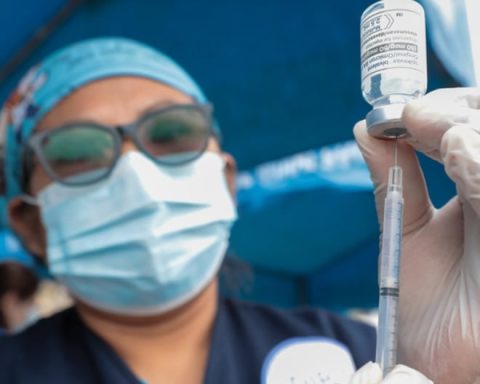Migraine is like a “lonely disease” because the patient who suffers attacks “tends to isolate himself, which gives him the feeling of being alone”, and can cause depression and is “extraordinarily disabling”, specialists said.
The Spanish Patricia Pozo-Rosichhonorary secretary of the International Headache Society (IHS), told Télam that it is a “silent pandemic” because it does not have the consideration it should, and the necessary resources are not allocated for its investigation.
The specialist made these statements within the framework of the first Regional Conference on Headache It took place last week at the Torcuato Di Tella University, where neurologists and researchers from Latin America met to discuss this problem, which, they assured, affects all ages.
In her presentation, Patricia Pozo-Rosich defined migraine as a “solitary disease” because the patient who begins to have a migraine attack tends to isolate himselfwhich gives you the “feeling of being alone”, and can cause depression and other types of disorders.
“Patients are hidden and have no voice, unlike rare diseases, which have greater visibility,” he said in his presentation.
“Patients are hidden and have no voice, unlike rare diseases, which have greater visibility”
Pozo-Rosich indicated that in the world it is estimated that “one billion people suffer from migraineand at least 82 million people are having a migraine right now“.
In dialogue with Télam, the neurologist explained that the word headache means headache, and that a person can suffer from secondary headaches, this means pain, for example, the product of a fever or a blow.
“Migraine is a disease in which episodic and recurrent attacks occur where for one or three days you are totally out of control. The brain turns off, on those days it cannot think,” he explained.
“Migraine is a disease in which episodic and recurrent attacks occur where for one or three days you are totally out of control. The brain turns off, on those days it cannot think”
the migrainea may be accompanied by a number of adjacent symptoms to headache, such as annoyance to light (photophobia), noise (phonophobia), causes nausea, vomiting, sometimes even vertigoamong other symptoms.
“In the general population there is a headache called tension type, which are types of mild migraines. What happens is that only the most serious ask for help,” he explained.
Migraine is a disease that affects all ages, but especially women between 15 and 55 yearsthat is, in the fertile age of a woman’s life.
“Statistics say that 15% of people worldwide suffer from this disease, and it affects 8% men and 18% women,” he said.
Likewise, the specialist explained that migraine is an “extraordinarily disabling” disease, and is the first disease for years lost in disability.
“Disability means that on that day the person cannot do any of their personal, professional, family or social activity, and the fact that this happens unpredictably over time, if we add up, the total sum of all the days when one is not able to do something is huge,” he explained.
In addition, he specified that to be considered a person with migraine it is necessary to have had at least five attacks throughout life, and not one: “When they occur repeated over time it is migraine, and the difference is that it is more than a pain headache, it’s an unpredictable disease.
The specialist explained that the fundamental problem of migraine is that it generates “little empathy” on the part of society that you have to invest for the investigation of this disease.
“The problem is that the world is driven by diseases that they are afraid of having or that they are afraid of killing them, and since it doesn’t kill them, then it doesn’t matter a bit,” he said.
According to the World Health Organization (WHO), migraine is the eighth most disabling disease globally..
For its part, María Teresa Goicochea, head of the Fleni Headache Clinic, explained to Télam that “We call headache all pain that is in the skull, including the head, face and structures of the head. Any pain that is located in that area.”
Goicochea indicated that the patient has to take into account the type of pain he feels (they can be oppressive, throbbing, electrical pain), consider the duration of the pain (minutes, hours or days), in which situations it occurs, the location ( on the whole head, behind the eye, on the back), if it interrupts sleep, and in the case of women, if it appears during or linked to the menstrual period.
“The patient should consult his clinician informing what is happening and his symptoms. If necessary, the patient is referred to the neurologist and if there are any doubts, the patient is referred to a headache specialist. What shouldn’t happen is living with the headache or accepting that they are ‘normal,'” he explained.
According to the specialist, it is currently necessary to disseminate and educate the population about migraines, as well as in the medical field, to correctly diagnose and treat a headache.
“When we talk about migraine we talk about a neurological disease and not just an annoyance. This is why it is necessary to validate it and not minimize it because it generates a significant disability during the attacks that compromises the person’s functioning,” concluded the specialist.
Finally, Pozo-Rosich argued that it is necessary to “change the paradigm of the treatment of the disease” since it makes no sense to wait for patients to feel “very bad” and only then give them treatment and try to return them to “normal”.
“The current challenge is to make the disease more visible and, above all, to give early treatment access before the disease becomes something indomitable, chronic and extraordinarily disabling,” concluded the neurologist.
















